We’ve researched and tested hiking boots specifically designed for wide feet. Our picks are based on real-world testing, brand expertise, and understanding what makes wide-width boots different from standard options.
Read on to see which boots we recommend and why we chose them.
The Verdict – Our Number #1 Pick
They’re waterproof, have excellent traction, and don’t require much breaking in, even with wide feet.
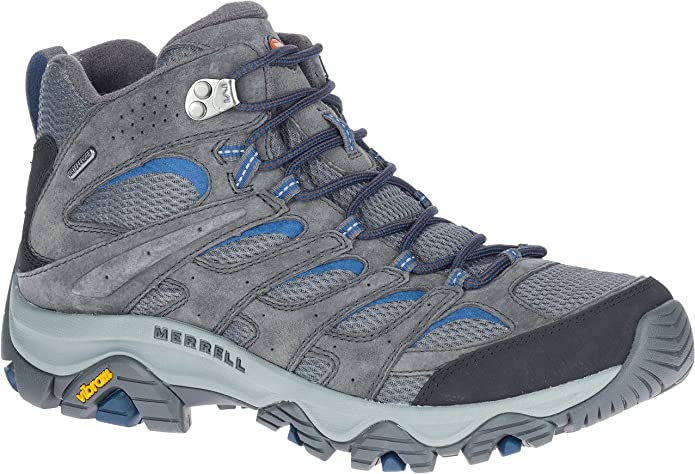
We firmly believe that the Merrell Moab 3 Mid Waterproof Hiking Boot stands out as the top choice for individuals with wide feet. This hiking gear possesses all the essential qualities that make it exceptionally well-suited for outdoor adventures.
We tested 14 hiking boots on trails across the US and Europe, covering rocky, muddy, and varied terrain. We evaluated waterproofing, breathability, insulation, fit, cushioning, and grip through multi-day field tests and specialist consultations, then considered external reviews to select our top 5 wide-feet hiking footwear.
Our Top Recommended Hiking Shoes For Wide Feet
1) Merrell Moab 3 Mid – Rating 4.7/5
The rubber sole on these leather boots is one of the best for providing maximum traction on various surfaces, and the removable contoured insole allows you to swap in your own insoles for maximum arch support.

Merrell produces high-quality traditional hiking boots and even offers them in wide sizes, which makes me appreciate the brand even more.
The Gore-Tex waterproof membrane is a great advantage, as it keeps your feet dry—a must for day hikes in rainy or muddy conditions. The boots also come in various color combinations, so you can select the ones that best match your style.
Many wearers report that these boots are comfortable straight out of the box, and I agree. The Merrell Moab boots required hardly any break-in time before I wore them on the trails, and they felt comfortable immediately.
Find out more information about this product by checking our full review where we tested and analyzed all its features.
PROS
CONS
2) KEEN Targhee III Mid – Rating 4.5/5
The nubuck leather of these makes them more flexible and feel almost shoe-like. Many reviewers loved the fact that the wide size is actually wider than a lot of other brands.
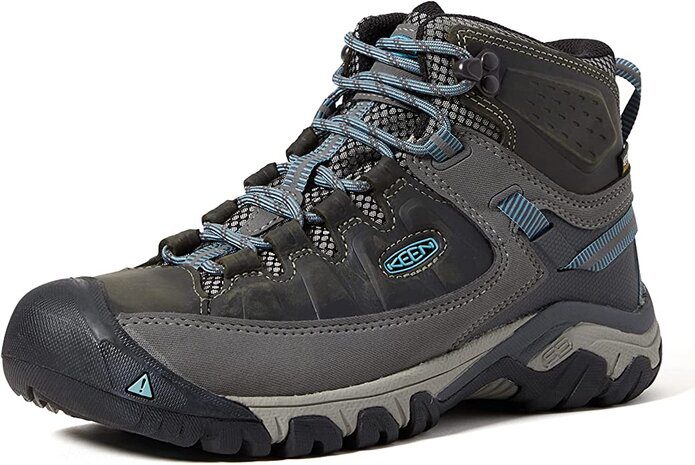
The KEEN Targhee III Waterproof Mid leather boot comes in both a low-height and a mid-height, both of which are waterproof and offer wide sizing. Like other Keen boots, they’re made of quality materials and have a very comfortable fit, even for the wide sizes.
In my experience with Keen boots in the past, they’re always very comfortable and provide good traction, but they tend to be a bit less durable than some other brands, especially concerning the soles wearing out.
However, their comfort for my wide feet keeps me returning to this brand time and again, and overall they are a very solid hiking shoe.
PROS
CONS
3) Salomon X Ultra 3 Mid – Rating 4.4/5
Its protective mudguard keeps the sides of the boot from getting too muddy, and the anti-debris mesh uppers prevent debris from getting trapped between your foot and the footbed.

If you’re looking for a synthetic leather hiking boot, you’ll want to consider the Salomon X Ultra 3 Mid GTX. Although these traditional hiking boots have a snug design, I found out that all you need to do is go up half a size, and they immediately turn into some of the best wide-width hiking boots on the market.
They are also lightweight boots and not very far from trail running shoes when it comes to weight, which I appreciate for long hikes. The gore-tex membrane makes the boots very waterproof, keeping water out of the upper, even if you’re walking through a stream.
In my experience, Salomon hiking boots are highly durable and worth the money.
Additionally, you can find this comfortable footwear in the low version.
Check our complete review of the Salomon X Ultra 3 GTX.
PROS
CONS
4) Columbia Newton Ridge Plus II – Rating 4.2/5
The upper of these boots is made from PU-coated leather, suede, and mesh, which means they are leather but not full-grain leather.

If you’re looking for a more budget option for boots for wide feet, you’ll want to consider the Columbia Newton Ridge. This boot is a great choice for winter hiking because it’s warm and waterproof.
Many say these are best suited if you’re doing some light hiking, and I agree with that assessment. They’re slightly less durable than other brands, so I wouldn’t expect them to last for the long haul or if you’re consistently hiking long distances.
However, these lightweight hiking boots make a good choice for the weekend recreational day hiker.
Learn more about this product by checking our review of the Columbia Newton Ridge Plus II.
PROS
CONS
5) Timberland White Ledge Mid Ankle – Rating 4.0/5
They have great shock absorption as well due to their EVA rubber midsole. The rubber lug outsole is made from recycled materials, making it an eco-conscious choice.

I was so happy to see that Timberland made hiking boots that fit wide feet, as this brand makes some of the best-looking boots on the market.
These full-grain leather upper boots have a waterproof membrane to keep your feet dry and comfortable. However, our tests revealed that the waterproofing is not that effective if the boot is exposed to water for a longer time.
Many users say that wearing these helps prevent foot fatigue because of the rigid internal TPU shank, which makes them popular with wide-footed hikers. I’ve noticed that Timberland boots tend to fit true to size, which makes finding the right size easier than other brands.
PROS
CONS
Comparison Table
| BOOT | PRICE MEN | PRICE WOMEN | WATERPROOF | WEIGHT | Upper Material | Best For | Durability |
|---|---|---|---|---|---|---|---|
| Merrell Moab 3 Mid WP | Check on Amazon» $170 on Backcountry» $170 on REI» | Check on Amazon» $170 on Backcountry» $170 on REI» | Yes (GTX) | 17.5 oz (495 g) | Mesh/Suede | Hot weather, comfort | High |
| Keen Targhee III Mid | Check on Amazon» $170 on Backcountry» | Check on Amazon» $170 on Backcountry» | Yes (KEEN.DRY) | 18.2 oz (515 g) | Leather/Mesh | All-around, trails | High |
| Salomon X Ultra 3 Mid GTX | Check on Amazon» Check on eBay» | Check on Amazon» Check on eBay» | Yes (GTX) | 17.5 oz (495 g) | Synthetic | Technical trails | High |
| Columbia Newton Ridge Plus II | Check on Amazon» $100 on Backcountry» | Check on Amazon» $100 on Backcountry» | Yes (Omni-Tech) | 15.9 oz (452 g) | Leather/Mesh | All-purpose, casual | High |
| Timberland White Ledge Mid | Check on Amazon» | Check on Amazon» $120 on REI» | Yes (Seam-sealed) | 18.7 oz (530 g) | Leather/Suede | All-around, comfort | Good |
Wide Feet Hiking Boots Buyer’s Guide

We considered all of the following factors as we came up with our recommendations for the best hiking boots for wide feet.
1. Fit
We recommend buying hiking boots that have a secure fit without feeling too tight or loose. Finding the right fit will help you avoid rubbing and chafing and provide more stability on the trail. Make sure you buy a brand that offers a wider-fit shoe, not just a standard size.
However, remember that what’s considered “wide widths” varies by different manufacturers, so you’ll need to try them on and assess them for comfort. Learn more about how much toe room in your hiking boots is enough for a good fit.
During our tests, Merrell Moab 3 Mid Waterproof offered an accommodating fit, preventing toe bang and heel slippage. We appreciated that it comes with a generous toe box and is offered in wide versions, so we granted it a solid 4.5/5.
However, we found the Salomon X Ultra 3 Mid GTX to be overall narrower, but nothing that can’t be solved by going up half a size. Still, it only got a 3.75/5 from us.
2. Weight
Buy a hiking boot with the right weight for the terrain you will most frequently visit. A lightweight hiking boot gives you speed and preserves energy but will not provide as much protection as a mid-weight shoe.
Also, if you plan to hike the most rugged terrain, you’ll want a heavy-weight boot for ankle support and durability. More details here.
Salomon’s X Ultra 3 Mid GTX is a good example of a lightweight and nimble boot that doesn’t sacrifice protection, and we found it very comfortable during hiking – it got a 4.5/5 from us.
On the other hand, KEEN Targhee III Mid, although a good choice for technical terrain, is a tad heavy for regular hikes. It kept slowing us down, so we rated it a 3.5/5.
3. Tread

A thick rubber outsole with a deep tread will give you the traction you need for uneven surfaces [2].
Indeed, boots with a more aggressive tread pattern tend to be heavier and require more maintenance (you need to clear the debris from between the lugs).
However, you’ll want to ensure that your wide-toe box hiking boots can cling well to rocks and dirt so that you don’t slip or get injured.
Good traction is one of the most important things you can look for when purchasing hiking shoes.
As we explored more challenging terrains during our tests, Salomon’s X Ultra 3 Mid GTX didn’t disappoint, earning its 4.75/5 for tread after performing well even on muddy trails.
Unfortunately, Columbia’s Newton Ridge Plus II WP fell short of providing sufficient traction on slippery surfaces, making it less ideal for demanding hiking environments, so we rated it only 3/5.
4. Cushioning
Wide feet naturally have more surface area, which can spread pressure more unevenly within a shoe. That’s why you’ll need to look for shoes that can absorb pressure better.
Good cushioning minimizes strain and fatigue on the feet, particularly during long periods of activity, although it does add more bulk and weight.
We gave 4/5 stars to KEEN Targhee III Mid for its ample padding around the ankle area and overall comfort feel that worked as promised right out of the box.
Conversely, while Timberland White Ledge Mid Ankle Boots seemed a good choice at first, after two more serious hikes, the cushioning started to decline, which prompted us to grade it only 3.25/5.
5. Breathability
Always consider breathability when purchasing a new pair of boots. As you hike, your feet will sweat, and you’ll also have foot swelling.
For the summer, it’s better to avoid waterproof footwear or try to find models that offer breathable membranes and lighter materials to avoid overheating.
During the cold season, you’ll want to balance warmth with ventilation and waterproofing to make sure your feet can still breathe properly without getting wet or experiencing frostbite.
Our tests showed that Columbia Newton Ridge Plus II WP is a good option for warm weather, with a 4/5 score for breathability, while Merrell Moab 3 Mid Waterproof got only a 3/5 due to its thick construction and solid waterproofing that led to sweaty feet.
However, their non-waterproof version offered better ventilation, so it’s worth trying in the Spring or Autumn.
6. Comfort
Of course, you do not want your boots to feel uncomfortable, especially on technical trails. That’s why it’s important to look for wide-width boots and not settle for standard size, which will likely feel too narrow.
For ideal comfort, your foot should feel snug in the boot, but they should not compress the foot tightly. The right hiking boots won’t give you blisters or pressure points as you hike.
Merrell Moab 3 Mid Waterproof got a solid 5/5 on our comfort scale for its zero-day break-in period and good support on the trail.
On the opposite, Columbia Newton Ridge Plus II WP scored only a 3.25/5 after failing to maintain support on rough trails, especially when we carried heavy loads.
7. Water Resistance

Waterproof boots offer greater versatility, preparing you for a range of situations. Whether it’s rain showers or creek crossings, as long as the boots are sufficiently high, they keep your feet dry.
However, it’s important to note that waterproof membranes can reduce breathability and add some weight, though some models strike a good balance between these factors.
In our tests, the Salomon X Ultra 3 Mid GTX performed excellently, remaining dry in various conditions without being overly heavy or hot, earning a solid 4.75 out of 5 in waterproofing.
On the other hand, the Columbia Newton Ridge Plus II WP fell short of expectations. Its upper wasn’t as waterproof as claimed, meriting only a 2.5 out of 5 in our evaluation.
8. Ankle Support
Having good ankle support is crucial for trail safety, regardless of whether your feet are wide or narrow. This becomes particularly evident during descents, as your ligaments are under significant pressure and the likelihood of ankle rolls increases.
The importance of a well-cushioned collar bracing your ankle becomes unmistakably clear at these times.
A mid- or high-cut boot’s drawback lies in its need for breaking in, yet this is a worthwhile endeavor when tackling more technical terrains.
In our experience, the Salomon X Ultra 3 Mid GTX provided excellent ankle support, earning a 4.5 out of 5 rating from us. However, the Timberland White Ledge Mid didn’t measure up in this regard.
We found it challenging to achieve a secure ankle fit, leaving us feeling vulnerable on sharp descents.
Hiking Footwear Brands That Run Wide
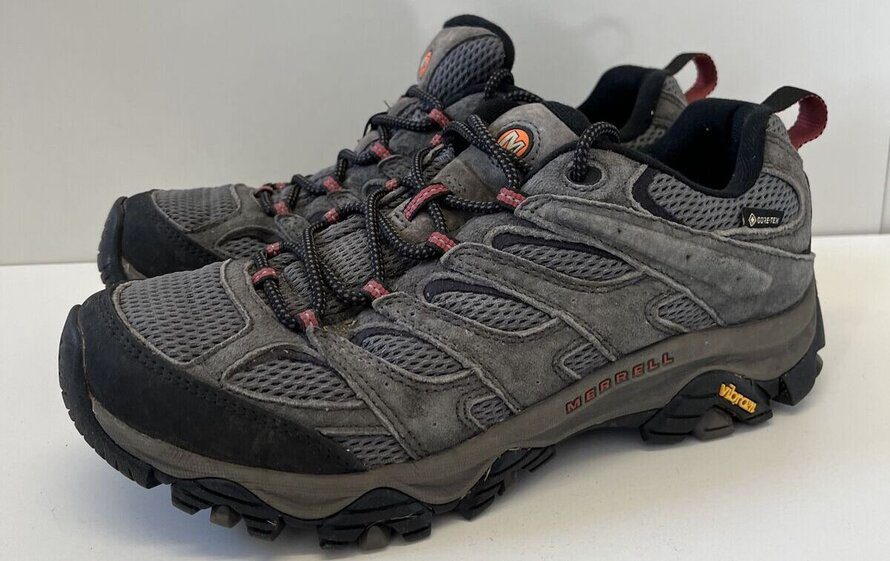
These are well-known companies that accommodate wide-feet hiking boots and hiking shoes:
- Keen
- Salomon
- Merrell
- Altra
- La Sportiva
- Zamberlan
- Lowa
- Sketchers
FAQs
Wide-foot shoes are designed with extra width to provide more room in the toe box and across the arch, and it offers better comfort for those with wider feet. Regular shoes, on the other hand, are narrower and fit standard foot widths.
To determine if hiking boots have a wide toe box, check if there’s extra space around the toes when you try them on, ensuring they don’t feel cramped. Look for boots labeled as “wide” or check product details for specifications on toe box width.



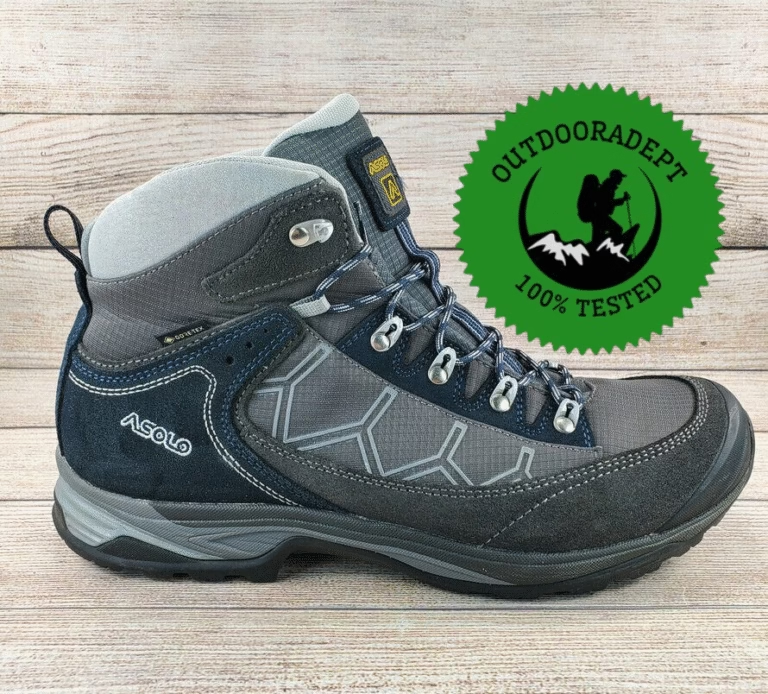


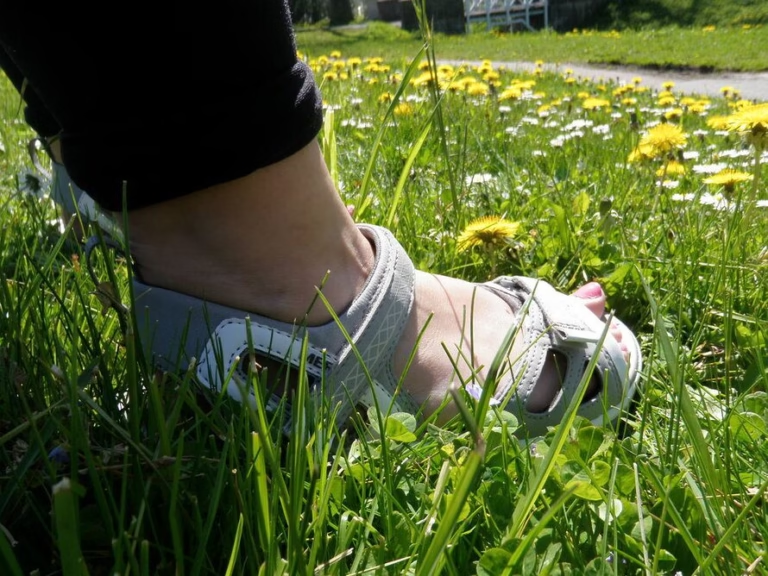
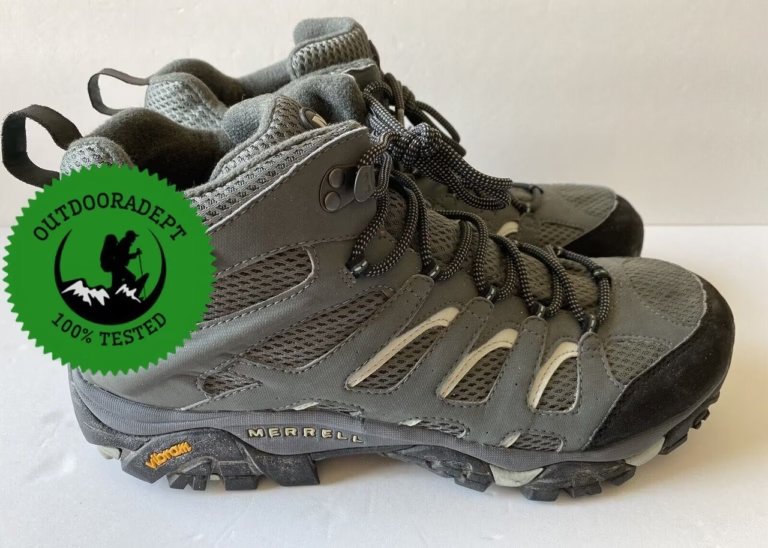

I really appreciate this guide! Finding comfortable hiking boots for wide feet has always been a challenge for me, so it’s great to see specific recommendations tailored to our needs. I’ll definitely check out the options you’ve listed. Thanks for sharing!
Great list! I’ve been struggling to find comfortable hiking boots that fit my wide feet. I appreciate the detailed reviews and options provided. Can’t wait to try some of these out on my next adventure!
Great post! I’ve struggled for years to find the right hiking boots for my wide feet, so I really appreciate the detailed reviews. The tips on fit and features to look for were especially helpful. Can’t wait to try out the top recommendations!
Great recommendations! I’ve always struggled to find hiking boots that fit my wide feet comfortably, so I appreciate the detailed reviews. The tips on choosing the right size and fit are super helpful. Can’t wait to try out some of these options!